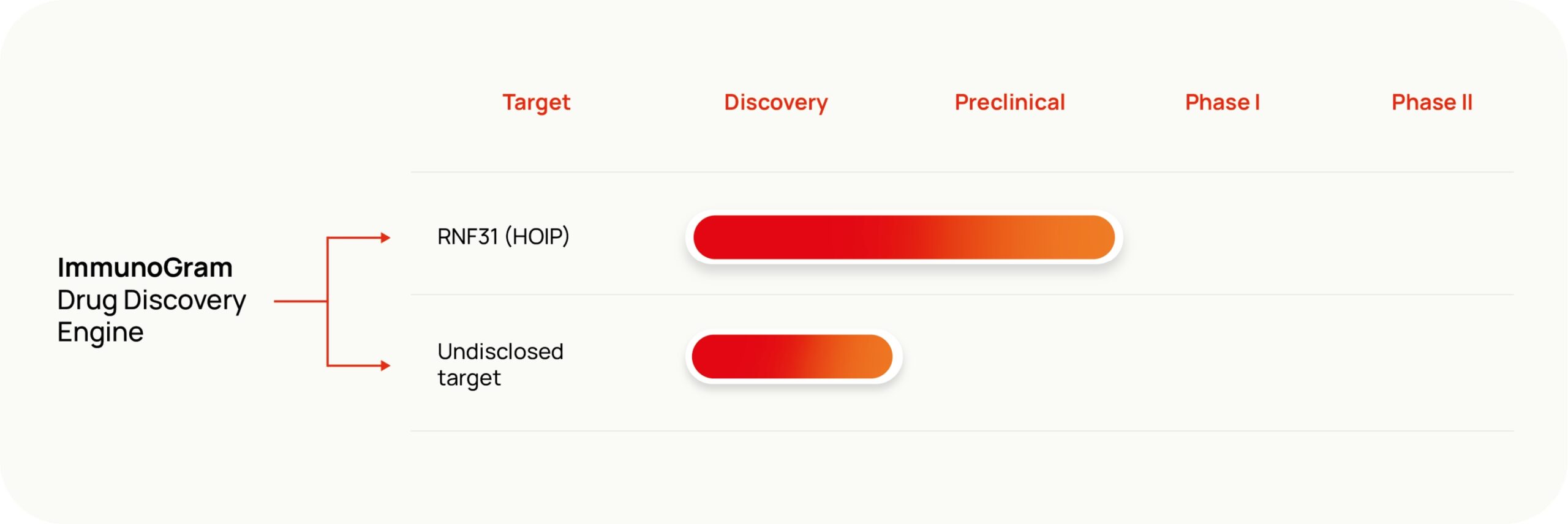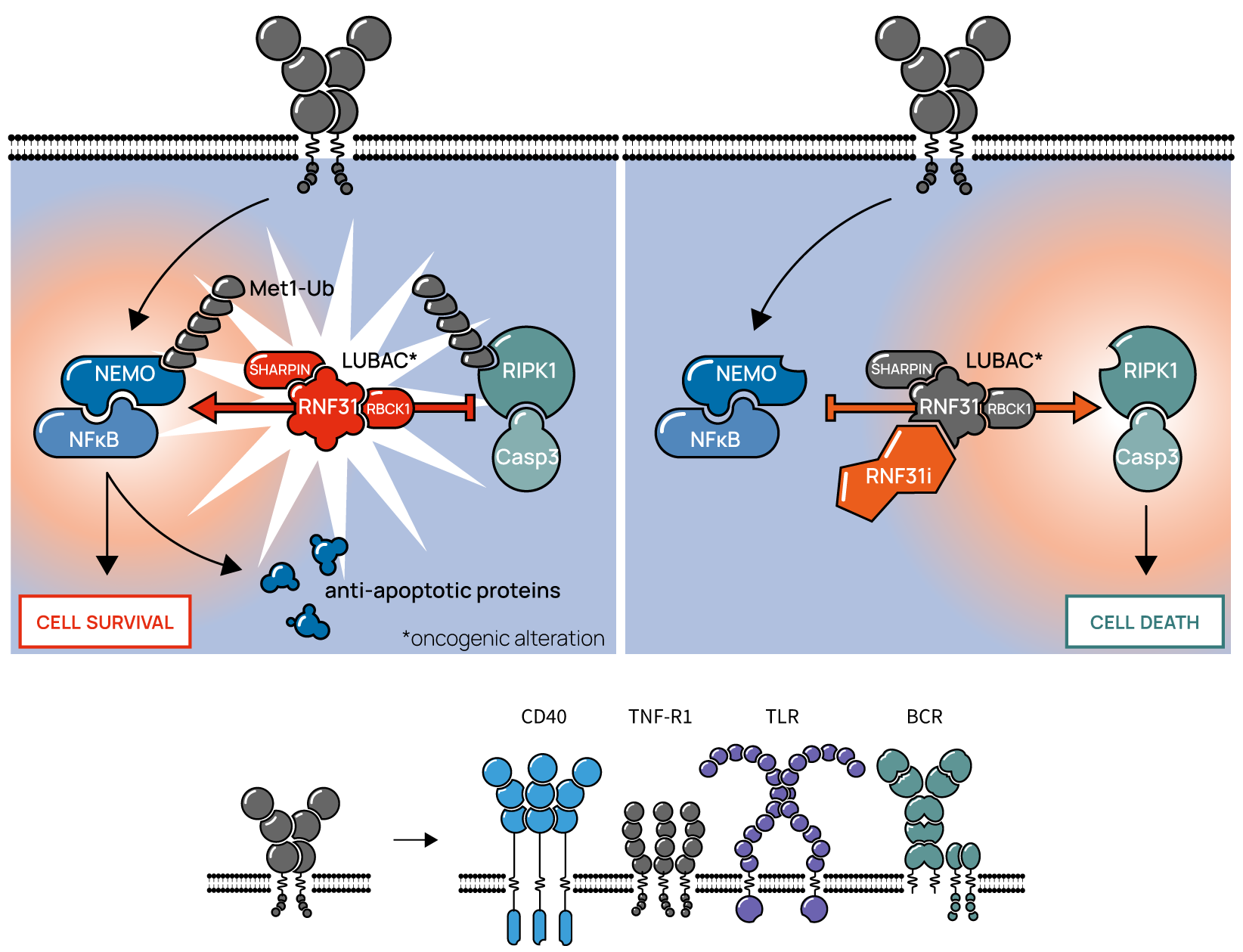Pipeline

RNF31 program
RNF31 (HOIP) was the first target that we identified with our ImmunoGram Drug Discovery Engine. Since Flindr’s co-founder Prof. Daniel Peeper published his research on RNF31, many other leading research groups confirmed that RNF31 represents a new exciting cancer drug target.
RNF31 is the catalytic core of the linear ubiquitination chain assembly complex (LUBAC), which also consists of RBCK1 (HOIL) and SHARPIN. LUBAC controls the fate of cells to die or live by regulating NF-kB signaling in response to a diverse range of receptor-mediated external stimuli. It does so by conjugating ubiquitin in a head-to tail manner to generate linear (M1-linked) polyubiquitin chains, which serve to stabilize proteins.
Gain-of function mutations, overexpression and amplification of LUBAC complex members have been identified in human cancers including a significant proportion of B-cell lymphomas and ovarian cancer.
Oncogenic activation of LUBAC leads to aberrant hyperactivation of the TNFa, CD40, Toll-like receptors and B cell receptor instigated NF-kB pathways. Other than LUBAC, the NF-kB pathway members including CARD11, BCL10, A20 are often mutated, deleted or amplified in cancer.
No clinically approved therapeutics exist to date to block the frequent aberrant hyperactivation of the NF-kB pathway in cancer. Inhibition of RNF31 is an attractive strategy to block NF-kB pathway activation, since RNF31 acts downstream of most NF-kB pathway mutations. Flindr found a way to block RNF31, flipping the RNF31 switch to stop proliferation of tumor cells and make them die.
Flindr’s RNF31 inhibitors block NF-kB activation and simultaneously induce RIPK1-induced cell death in preclinical hematological and solid cancer models. Flindr discovered reliable, easy to use biomarkers to spot those patients likely to benefit from an RNF31 inhibitor.

Our second program enabled by the Immunogram Drug Discovery engine is a first-in-class small molecule inhibitor targeting a novel drug target. Flindr developed a compelling data package that supports an application in multiple solid tumors.
Second
program
Second program
Our second program enabled by the Immunogram Drug Discovery engine is a first-in-class small molecule inhibitor targeting a novel drug target. Flindr developed a compelling data package that supports an application in multiple solid tumors.
Discover our Publications
Dive into our Publications section to discover our latest research articles on RNF31.
